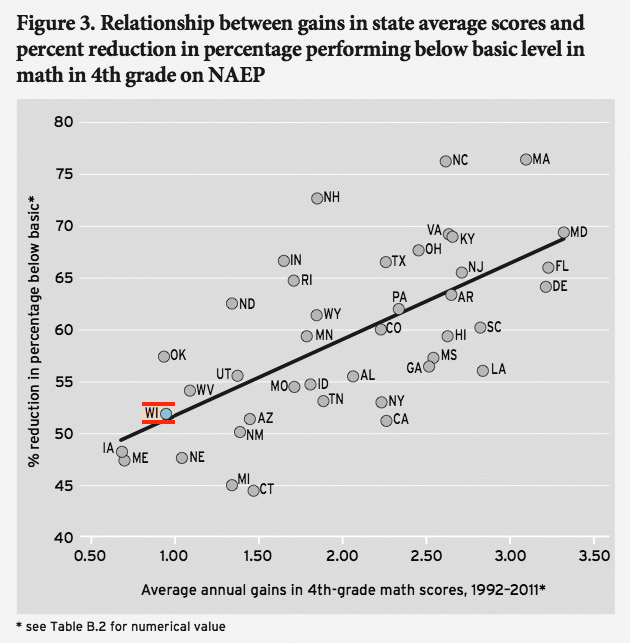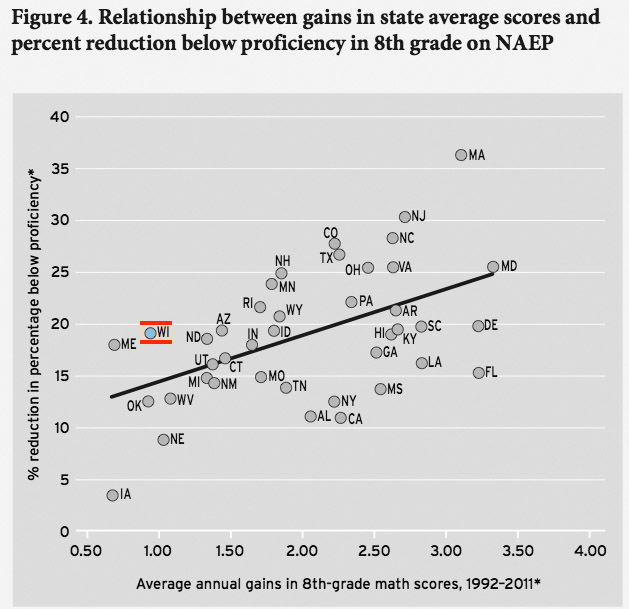


(Tap or click to view a larger version)
Eric A. Hanushek, Paul E. Peterson & Ludger Woessmann
“The United States’ failure to educate its students leaves them unprepared to compete and threatens the country’s ability to thrive in a global economy.” Such was the dire warning recently issued by a task force sponsored by the Council on Foreign Relations.
Chaired by former New York City schools chancellor Joel I. Klein and former U.S. secretary of state Condoleezza Rice, the task force said that the country “will not be able to keep pace–much less lead–globally unless it moves to fix the problems it has allowed to fester for too long.”
The report’s views are well supported by the available evidence. In a 2010 report, only 6 percent of U.S. students were found to be performing at the advanced level in mathematics, a percentage lower than those attained by 30 other countries.ii Nor is the problem limited to top-performing students.
Only 32 percent of 8th- graders in the United States are proficient in mathematics, placing the United States 32nd when ranked among the participating international jurisdictions. Although these facts are discouraging, the United States has made substantial additional financial commitments to K-12 education and introduced a variety of school reforms.
Have these policies begun to help the United States close the international gap?
Progress was far from uniform across the United States, however. Indeed, the variation across states was about as large as the variation among the countries of the world. Maryland won the gold medal by having the steepest overall growth trend. Coming close behind, Florida won the silver medal and Delaware the bronze. The other seven states that rank among the top-10 improvers, all of which outpaced the United States as a whole, are Massachusetts, Louisiana, South Carolina, New Jersey, Kentucky, Arkansas, and Virginia.
Iowa shows the slowest rate of improvement. The other four states whose gains were clearly less than those of the United States as a whole, ranked from the bottom, are Maine, Oklahoma, Wisconsin, and Nebraska. Note, however, that because of nonparticipation in the early NAEP assessments, we cannot estimate an improvement trend for the 1992-2011 time period for nine states–Alaska, Illinois, Kansas, Montana, Nevada, Oregon, South Dakota, Vermont, and Washington.
Related: